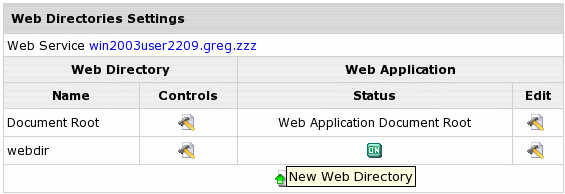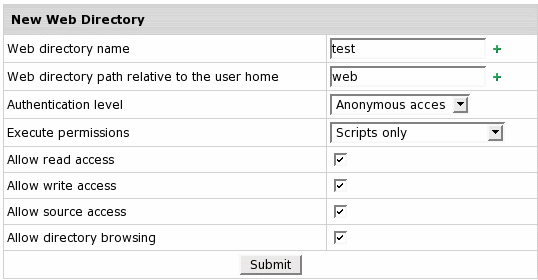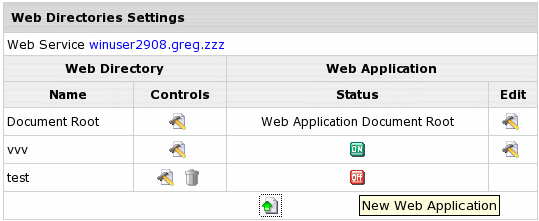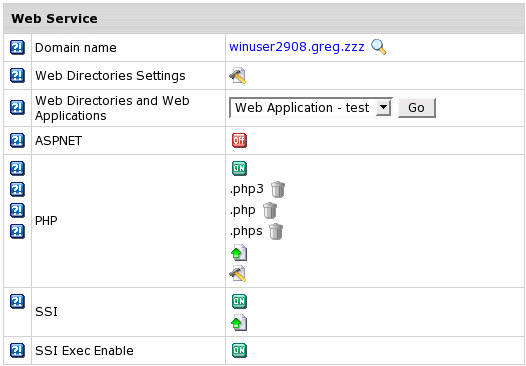|
Starting with version 3.0, H-Sphere implements Web application pools for users of
Windows 2003 and Windows 2000 platforms.
Application pools allow applications to run together in one or more processes,
as long as they share the same pool designation.
Because each application pool runs in its own worker process, errors in one application pool
will not affect the applications running in other application pools.
There are two types of Application Pools implemented by H-Sphere:
Shared Application Pool and Dedicated Application Pool.
All newly created resources that use application pools are by default created in the Shared Application Pool.
This document will tell you how to configure Dedicated Application Pools,
Web Directories and Web Applications.
Dedicated Application Pool
To add a Dedicated Application Pool:
In Windows 2003
- Go to Account -> Account Settings in your user CP.
- In the section Dedicated Application Pool, click Add
- Enter extension and maximum number or worker processes.

You can set any extension for the pool name. Extension can also be empty.
In Windows 2000: Dedicated Application Pool is not available.
Web Directory
To add a Web Directory:
- Go to Domain Info - > WebService
- Go to Web Directories Settings.
- Click the Add button to create a new web directory

- Fill in the form for your new directory and click Submit.

Where:
- Enter Web directory name and Web directory path relative to the user home
- Authentication level - choose between Anonymous Access and Protected Access.
Anonymous access gives access to the public areas of your Web or FTP site without prompting
them for a user name or password. Protected authentication gives users
access to the resources prompting them for a user name or password.
- Execute permissions option determines the program execution level allowed for this site's resources:
None restricts access only to static files such as HTML or image files, Scripts only allows
only scripts to run, not executables and Scripts and Executables removes all restrictions so that
all file types can be accessed or executed.
- Allow read access - check the box to allow users to read or download files or directories and their
associated properties.
- Allow write access - check the box to allow users to upload files and their associated properties to the
enabled directory on your server or to change content in a Write-enabled file. Write access is allowed
only with a browser that supports the PUT feature of the HTTP 1.1 protocol standard.
- Allow source access - select to allow users to access source code if either
Read or Write permissions are set. Source code includes scripts in ASP applications.
- Allow directory browsing - select to allow users to see a hypertext listing of the files
and subdirectories in this web directory.
- Confugure web directory resources.
To do this, go to the Web Service page for this domain and click Edit next to Web Directories Settings:

Resources available for the web directory are MIME Type,
Error page and Directory Indexes.
You can edit and delete web directories.
Web Application
To assign a Web Application to a web directory:
- Go to the Web Service page for this domain and click Edit next to Web Directories Settings:
- On the page that appears, click to enable Web Application for the chosen Web Directory:

In Windows 2003
- Choose Application Pool from the drop-down box and click Submit:

- Confugure web directory resources.
To do this, go to the Web Service page for this domain and click Edit next to Web Directories Settings:

Resources available for the web application are PHP,
ASP.NET and SSI.
You can edit and delete web applications.
|